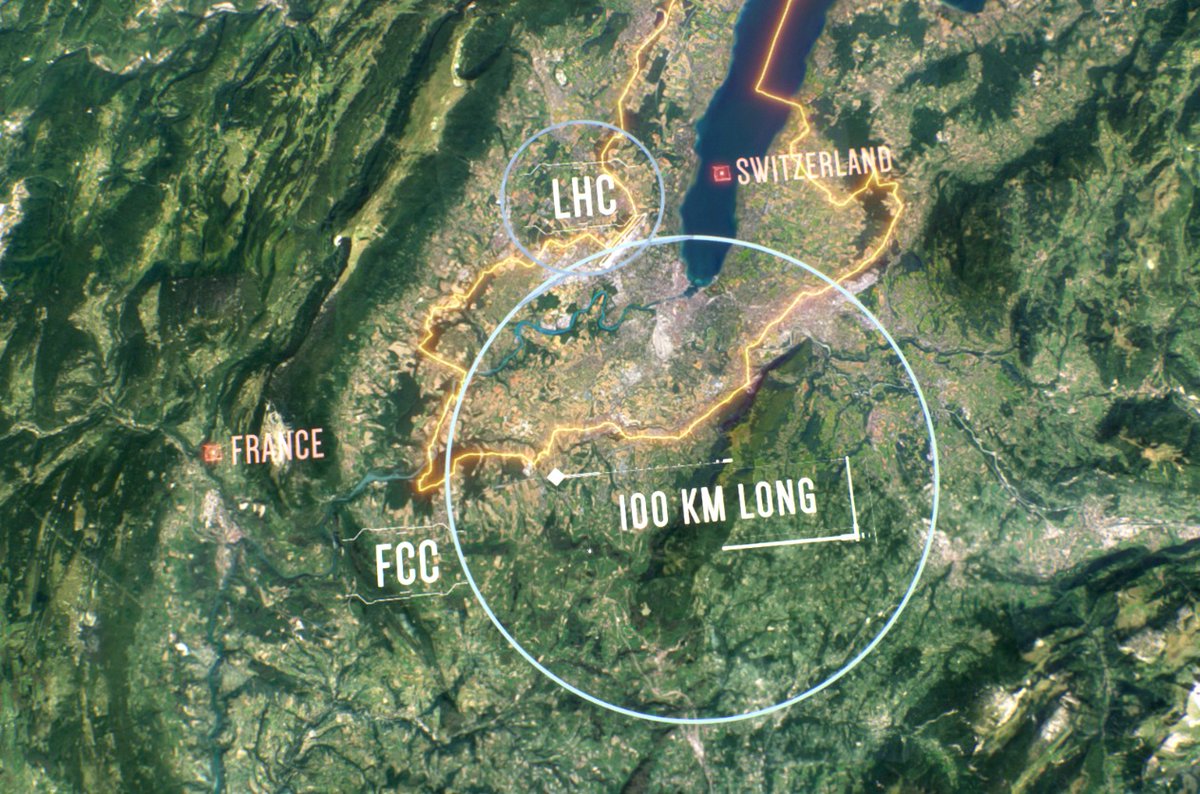Theory goes forward to meet the FCC-ee strong experimental demands.

The remarkable precision of LEP and other lepton colliders in the past has been instrumental in testing and understanding the Standard Model. In particular it was able to predict, by their effect on quantum corrections (a.k.a. ’loops’), the masses of the top quark and Higgs boson before their observation at hadron colliders. At a time where nature is asking broad questions to which the Standard Model offers no answers, particle physicists are eager to use all available means that could give hints towards the required physics that must be lying beyond the present framework. Lepton colliders of the next generation might well play this exploratory role in the future.

The future circular electron-positron collider (FCC-ee), explored by the FCC study [1], is an extraordinary machine for a broad exploration of new frontiers in physics. Thanks to the design combining the experience acquired at LEP and the B-factories, it provides unprecedented luminosity and center-of-mass definition for studying the Electroweak scale: 5 x 10^12 Z bosons, 10^8 W pairs, 10^6 Higgs and top pairs in clean and precise experimental conditions will allow studies at unparalleled level of precision, of the Higgs boson and the electroweak scale. As an exploratory machine it is ideally suited to discover new elusive particles that could interact extremely weakly, or unveil the existence of new heavy particles by their indirect effect (loops) on ultra-precise measurements.
Bringing precision of theoretical calculations to the required level of the FCC-ee experiments has been one of the key challenges to meet these goals. The FCC-ee, when operating in the Z-boson resonance mode, will have a luminosity five orders higher than those of LEP. Under these conditions, the projected uncertainty of the Z-boson decay width will shrink from 2.3 MeV to 0.1 MeV or less. The present theoretical uncertainty, due to lack of higher order radiative corrections, was estimated at the level of 0.5 MeV, due to certain NNLO and NNNLO (2- and 3-loop) radiative corrections to the Z-boson electroweak pseudo-observables (EWPOs) and thus was considered to be a titanesque work to reach. Similar improvements by one or two orders of magnitude are expected on the W boson mass and many other quantities, posing an overall challenge to theory. However, at the mini-workshop that look place at CERN [2], the presentations about recent and ongoing work suggest a more optimistic viewpoint.
First, the last missing 2-loop Standard Model correction of the bosonic type to the Z boson decay width were presented [3], shifting the field of battle to the 3-loop level. The bosonic NNLO corrections have been calculated numerically using sector decomposition and Mellin-Barnes methods. These methods have been developed in recent years for a direct calculation of Feynman integrals with high accuracy in the physical kinematical regime. The results give a new basis for the quantitative estimation of NNNLO corrections at the level needed by experimentalists. Secondly, there is a huge progress in methods and tools to keep the time needed for these numerical calculations within reasonable limits. A number of talks presented the steps made in different fields: from analytical methods of Feynman integral calculations (introducing elliptic functions and beyond), differential equations, integration-by-parts and unitarity methods to further progress in the numerical approaches to multiloop and multiscale integral calculations.
Last but not least, apart from the precise calculation of EWPOs, the unfolding of QED corrections must be also done with higher precision. There is a great progress in understanding what needs to be done and how, based on QED resummations with Monte Carlo and S-matrix approaches.
All in all, the workshop gave a strong message that recent theoretical developments can reach the required level of precision to match the expected accuracies of FCC-ee and will not limit their physics interpretation. To fulfil this, sufficiently strong funding support, collaboration and hard work will be needed in the years lying ahead.
[1] Future Circular Collider website: fcc.web.cern.ch , FCC-ee website: cern.ch/fcc-ee
[2] Mini workshop: Precision EW and QCD calculations for the FCC studies: methods and techniques", CERN, Jan 2018, {https://indico.cern.ch/event/669224/}.
[3] I. Dubovyk, A. Freitas, J. Gluza, T. Riemann, J. Usovitsch, unpublished, see talk by J. Gluza in [2].
